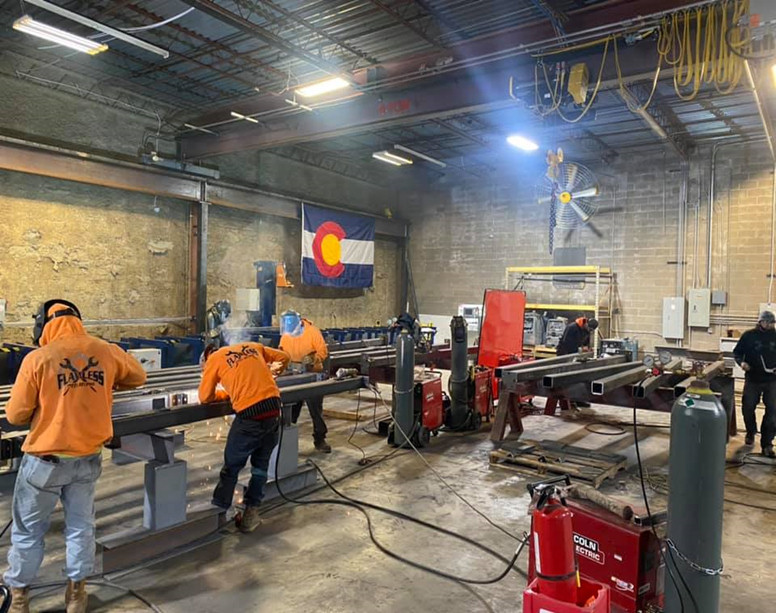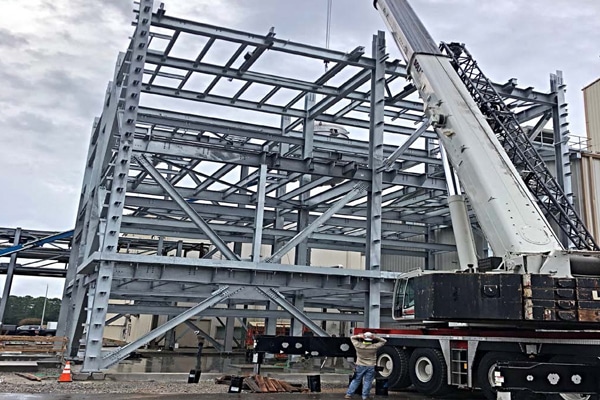Dependable Steel Fixing Services: Guaranteeing Structural Honesty
Dependable Steel Fixing Services: Guaranteeing Structural Honesty
Blog Article
Cutting-edge Patterns in Steel Manufacture: Enhancing Toughness and Accuracy
In the world of steel fabrication, the pursuit of toughness and accuracy has actually led to a wave of cutting-edge fads that are improving the industry. These trends are not just shaping the existing yet also laying the groundwork for the future of steel construction, assuring more improvements in sturdiness and precision.
Advanced Welding Technologies
In the world of steel fabrication, the fostering of sophisticated welding technologies has actually considerably changed the market's strategy to accomplishing superior top quality and precision in architectural welds. Advanced welding technologies, such as laser beam welding and friction mix welding, have arised as game-changers in the area. By leveraging these advanced welding strategies, steel fabricators can boost the sturdiness, toughness, and precision of their structural welds, meeting the increasingly requiring needs of contemporary building and construction projects.
Robot Automation in Construction
Welcoming robotic automation has actually ended up being a keystone of modern steel construction techniques, simplifying processes and boosting effectiveness across the market. Robotics are revolutionizing the way steel elements are produced, providing unrivaled precision and rate while lowering human mistake. These automated systems can handle recurring tasks with constant accuracy, bring about higher top quality output.
One key benefit of robot automation in steel manufacture is the capacity to function all the time without exhaustion, considerably enhancing production outcome. This constant procedure reduces downtime and speeds up job timelines, inevitably saving costs for manufacturers. Additionally, robots can be set to perform complex tasks that may be dangerous or difficult for human workers, enhancing security in the work environment.
In addition, robotic automation makes it possible for seamless combination with various other digital modern technologies, such as computer-aided design (CAD) software program and Internet of Things (IoT) systems (metal fabrication melbourne). This interconnected method boosts communication between various phases of fabrication, maximizing operations and making certain real-time monitoring and control. As the steel construction sector continues to progress, robot automation stands out as a transformative force driving effectiveness and accuracy in making procedures

High-Strength Alloy Development
The advancement of high-strength alloy advancement in steel construction is reshaping the market's method to improving material longevity and performance. High-strength alloys are crafted to show superior mechanical residential or commercial properties, such as enhanced tensile stamina, durability, and rust resistance contrasted to conventional steel grades. By incorporating these sophisticated alloys right into manufacture procedures, makers can create parts that endure higher tension levels and rough settings, causing even more trusted and sturdy final product.
One key benefit of high-strength alloy advancement is the ability to reduce product thickness without compromising architectural honesty. This not only results in lighter-weight parts however also contributes to cost savings and boosted effectiveness in fabrication and setting up processes. In addition, the boosted strength-to-weight ratio of these alloys enables the style and construction of frameworks with higher load-bearing capacities while lessening overall weight.
3D Modeling and Simulation Software Application
Advancements in steel manufacture processes have actually been considerably thrust by the combination of cutting-edge 3D modeling and simulation software tools. These devices allow producers to develop comprehensive virtual designs of their tasks, allowing them to visualize the end product with precision prior to any type of manual labor begins. By simulating various stress elements, ecological problems, and structural lots, producers can maximize designs for enhanced longevity and performance. Furthermore, 3D modeling and simulation software program improve the production procedure by identifying possible issues early on, decreasing the demand for pricey rework and lessening product waste.

Lasting Practices in Steel Production
Including sustainable methods into steel production procedures is crucial for reducing ecological influence and making sure long-term resource accessibility. One key lasting technique is the adoption of energy-efficient modern technologies to decrease greenhouse gas exhausts throughout the steel manufacturing procedure. This consists of using sustainable power sources, such as solar or wind power, to power steel plants and carrying out energy-efficient tools to optimize power usage.
One more crucial element of you could check here sustainable steel manufacturing is the accountable sourcing of basic materials. This involves making sure that the iron ore and various other resources used in steelmaking are acquired from environmentally friendly and honest sources. By advertising transparency in the supply chain and sticking to strict ecological requirements, steel suppliers can reduce the adverse impacts of resource extraction on local environments and communities.

Conclusion
Finally, the cutting-edge fads in steel manufacture such as sophisticated welding modern technologies, robot automation, high-strength alloy development, 3D modeling and simulation software, and sustainable techniques are improving the toughness and accuracy of steel items. These advancements are changing the steel fabrication sector by improving sustainability, quality, and effectiveness. It is clear that the future of steel manufacture lies in welcoming these cutting-edge modern technologies to satisfy the needs of contemporary building and construction and manufacturing sectors.
In the realm of steel fabrication, the search of resilience and accuracy has led to a wave of ingenious fads that are reshaping the industry.In the world of steel manufacture, the adoption of innovative welding modern technologies has substantially changed the industry's technique to achieving exceptional top quality and accuracy in structural welds. As the steel manufacture industry continues to advance, robot automation stands out as a transformative force driving effectiveness and accuracy in manufacturing procedures.
In addition, recycling and reusing steel scrap and waste materials play a significant function in improving the sustainability of find steel manufacturing. steel fixing.In verdict, the cutting-edge trends in steel manufacture such as advanced welding technologies, robotic automation, high-strength alloy advancement, 3D modeling and simulation software application, and sustainable methods are enhancing the longevity and accuracy of steel items
Report this page